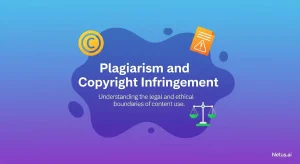How to Write a Recipe for Cookbooks: Expert Tips and Guidelines
Ashley Merit
Content writer and editor for Netus.AI
Table of Contents
How to Write a Recipe and Avoid Plagiarism?
How to Write a Recipe for Cookbooks. In today’s rapidly evolving publishing landscape, the potential for plagiarism in various forms has increased. Writing recipes, however, presents a unique challenge, as the transfer of knowledge between generations often leads to similarities in content. To create an original and engaging recipe while steering clear of plagiarism, consider the following pointers:
- Establish a clear vision: Begin with a clear idea of your recipe’s purpose, theme, and target audience. This will guide the development of your recipe, ensuring it is tailored to your chosen niche.
- Create a structure: Organize your recipe by outlining the necessary steps, ingredients, and equipment required. This will help readers follow your instructions effectively and understand the process involved.
- Be accurate and concise: Provide accurate measurements, cooking times, and serving sizes, keeping the content concise and straightforward to guide readers through the cooking process.
- Incorporate your voice and narrative: Personalize your recipe by incorporating your unique voice, inspiration, and culinary perspective. This will set your recipe apart and create an engaging narrative for readers.
- Adopt an organizing principle: Organize your recipes by category, difficulty, or cooking technique to provide a logical structure for readers, offering improved accessibility and easier navigation.
- Acknowledge influences: If your recipe draws on the work of others, recognize this by giving credit where due. Respect copyright rules protecting the originality of other authors’ work, particularly in the case of celebrity chefs who rely on their innovative recipes for maintaining their popularity.
By adhering to these guidelines, you can generate well-written and original recipes, effectively avoiding plagiarism and creating valuable content for your audience. With a focus on accuracy, organization, and a unique personal touch, your recipe becomes the perfect guide for readers eager to explore the culinary world.
Recipe Plagiarism and Copyright Rules
The topic of recipe plagiarism raises various opinions, as some believe that recipes cannot be owned, while others argue that they can be considered intellectual property. Although copyright rules protect numerous types of intellectual properties, such as artwork and music, the status of recipes remains contentious.
In the United States, recipes are generally not covered by copyright laws, as they are seen as mere lists of ingredients. However, copyright protection may extend to the literary aspects of a recipe, such as descriptions, explanations, illustrations, and specific writing styles used in cookbooks or food blogs. This enables cookbook authors and food bloggers to seek copyright protection for their unique presentation of recipes rather than the recipes themselves.
While chefs and culinary professionals may prefer to copyright the recipes as a whole, the current approach focuses more on protecting the creative expression used in presenting these recipes. This ensures that writers and content creators are able to protect their work while still allowing room for the sharing and adaptation of recipes in the culinary world. By understanding and adhering to these copyright rules, cookbook authors, food bloggers, and publishers can avoid legal pitfalls and maintain the highest level of originality in their work.
Recipes Are Not Secrets
While recipes play a significant role in the culinary world, they cannot be protected under copyright laws like other creative works. Chefs cannot claim intellectual property rights over their recipes, even though some, like KFC’s 11 Herbs and Spices, are held as trade secrets. Some actions can be taken within the food community to address recipe plagiarism, but comprehensive legal protection is lacking.
Cookbook authors and food bloggers can better protect their written content from being copied, if they can provide evidence of originality in words or images. However, establishing ownership over individual recipes is quite challenging. This is because plagiarists can make minor alterations or change the presentation method before republishing a recipe. As a result, proving copyright infringement in the realm of cookbooks and recipe writing becomes complicated.
Due to the absence of adequate legal support and the difficulties in verifying recipe plagiarism, many such cases remain unresolved.
How to Compose a Recipe and Prevent Plagiarism?
Expressing Uniqueness
Since many recipes are age-old, it’s crucial for writers to find creative ways to represent these recipes. They should focus on their words and presentation to make a difference, even when dealing with traditional recipes.
Emphasizing Visuals and Designs
Food bloggers and cookbook authors understand the importance of using images and illustrations. Not only do they enhance the appeal of their work, but they also contribute to making it stand out. While it may not be possible to protect a recipe’s steps or ingredients via copyright, the images and illustrations used in the cookbook can be protected. To avoid copyright infringement, writers should utilize their own photos, which simultaneously safeguard their work from being copied or plagiarized.
Implementing a Copyright Checking Tool
A copyright checker can help verify that writers are not violating copyright laws and detect any copied or duplicate content in their work. Although cookbook authors and bloggers may not obtain copyright protection for recipes’ steps, their cooking videos and podcasts do receive such protection. As a result, the content of these multimedia formats is secure.
Insights Before Wrapping Up
Since copyright protection for recipes might be challenging to obtain, many writers might not seek legal assistance. However, if a celebrity chef or writer has copyrighted content in their cookbook or food blog, such issues come to light.
As writers don’t have access to full copyright protection for their recipes, they should rely on their creativity while writing. Using a plagiarism checker before publishing the cookbook can be beneficial. The Copyleaks plagiarism checker, powered by advanced AI and Machine Learning technology, offers accurate real-time results, making it easier to identify anyone using dishonest methods to avoid plagiarism.
Additionally, Optical Character Recognition (OCR) technology can be employed to scan physical copies of cookbooks and check for any plagiarized content. This approach not only prevents potential legal troubles under copyright laws but also aids in safeguarding one’s work from plagiarism.
Frequently Asked Questions
What are the steps in crafting a cookbook recipe?
- Research and brainstorm your recipe ideas.
- Plan your ingredients, measurements, and cooking techniques.
- Test the recipe multiple times, making adjustments as needed.
- Write the recipe in a clear, concise, easy-to-follow format.
- Gather feedback from recipe testers and incorporate changes.
How should a recipe be formatted for professional publication?
- Start with the recipe title in a larger, bold font.
- List ingredients in the order they will be used, with precise measurements.
- Write step-by-step instructions in numbered or bullet points.
- Include any preparation or serving tips at the end of the recipe.
- Use consistent formatting throughout the cookbook.
Which key elements make a well-structured cookbook recipe?
- Accurate measurements and clear instructions.
- High-quality photos or illustrations.
- A concise and engaging recipe description.
- Preparation and cooking time estimates.
- Serving size information and possible variations.
What advice can you give to beginners creating their first cookbook recipe?
- Research similar recipes for inspiration and guidance.
- Keep it simple and focus on a few key ingredients or techniques.
- Test and retest your recipes.
- Seek feedback from friends or family members.
- Be patient, and enjoy the learning process.
How can I transform my handwritten recipes into a format suitable for cookbook publishing?
- Scan or photograph your handwritten recipes.
- Organize and transcribe them using a word processor or recipe management software.
- Edit your recipes for clarity, consistency, and accuracy.
- Consider using a template or design software for professional layout.
What is the process for getting a recipe book published?
- Develop a unique concept and target audience for your cookbook.
- Write, test, and format your recipes.
- Create a proposal or sample chapters to pitch to publishers or literary agents.
- Consider self-publishing if traditional publishing is not feasible.
- Promote your cookbook through social media and other marketing strategies.

The shortcomings of content generated by AI | NetusAI
Discover why fast, high-volume AI content often fails to deliver real results. Learn about the crucial missing feedback loop and how implementing performance tracking can transform your AI content strategy.

The illusion of AI: Your system's intelligence gap | NetusAI
Stop wasting marketing spend! Most AI tools don’t learn from results, causing content stagnation and low engagement. Discover why your generative AI isn’t getting smarter and what system actually learns and optimizes content.

Plagiarism and copyright infringement | NetusAI
Learn the distinct differences between plagiarism and copyright infringement. Understand the ethical and legal implications and get practical strategies for avoiding both academic and creative work with NetusAI.

Tips and strategies for mobile content marketing | NetusAI
Optimized for mobile-first indexing, learn 5 essential strategies to capture attention, enhance engagement and drive leads and sales with your mobile content marketing.

Web content editing guidelines for the AI era | NetusAI
Review web content editing guidelines for the AI era. Learn how to edit AI-generated content, ensure authenticity and optimize for SEO and readability.

Explaining AI pattern recognition | NetusAI
AI pattern recognition enables machines to identify trends for diverse applications, from detecting plagiarism to fraud. Discover its processes, models and real-world benefits.
